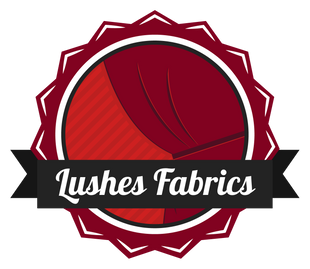What Is Flocked Velvet Fabric?
Flocked velvet fabric stands out as a unique and luxurious material with a rich history and remarkable versatility. From its intricate manufacturing process to its varied applications in fashion and interior design, this fabric continues to captivate designers and consumers alike. In this comprehensive article, we will delve into the history of flocked velvet fabric, examine its manufacturing process, discuss its unique properties, explore its common uses, and provide tips for its care and maintenance.
The History of Flocked Velvet Fabric
The history of flocked velvet fabric stretches back centuries, originating in the Middle East, where the flocking technique was first developed. Flocking involves applying tiny fibers onto a fabric surface using an adhesive, creating a velvety texture. This luxurious texture quickly gained popularity due to its soft feel and eye-catching appearance.
During the Renaissance, flocked velvet fabric found its way to Europe, where it became a favorite among the wealthy elite. The fabric's intricate patterns and vibrant colors were used to craft elaborate clothing, upholstery, and furnishings. In various cultures, flocked velvet fabric held symbolic significance. In China, it was used to create ceremonial garments for the imperial court, while in India, it adorned exquisite saris for special occasions.
The enduring appeal of flocked velvet fabric has solidified its place in the world of textiles. Whether used in fashion or home decor, this fabric continues to symbolize luxury, craftsmanship, and sophistication.
The Manufacturing Process of Flocked Velvet Fabric
Creating flocked velvet fabric involves a multi-step process. First, an adhesive is applied to a base fabric, usually made of cotton, polyester, or a blend of materials. Next, finely cut fibers, known as flock, are pressed onto the adhesive to create the velvety texture. This process allows for the creation of complex patterns and designs, making each piece of flocked velvet unique.
Flocked velvet fabric has several advantages. Its soft texture and luxurious appearance make it an attractive choice for fashion and home decor. It also has excellent durability, making it suitable for heavy use in furniture and clothing. However, some drawbacks include potential shedding of the fibers and the need for special care to maintain its appearance.
Different types of flocked velvet fabric offer distinct characteristics. Crushed velvet has a textured appearance due to its crushed fibers, while embossed velvet features raised patterns. Burnout velvet combines velvet with sheer areas to create a striking visual effect.
Properties and Characteristics of Flocked Velvet Fabric
Flocked velvet fabric's unique properties contribute to its enduring popularity. Here are some key characteristics:
-
Soft Texture: The velvety feel of flocked velvet fabric is one of its most appealing features. It adds a sense of luxury and comfort to any item.
-
Durability: Flocked velvet fabric is known for its strength and longevity. It can withstand wear and tear, making it ideal for furniture upholstery and clothing.
-
Vibrant Colors: This fabric is available in a wide range of colors, from bold and vibrant to soft and muted tones. This variety allows for creative expression in fashion and interior design.
-
Versatility: Flocked velvet fabric is highly versatile, suitable for a variety of applications. It can be used for clothing, upholstery, drapery, and even accessories.
Uses and Applications of Flocked Velvet Fabric
Flocked velvet fabric's luxurious texture and striking appearance make it a popular choice in both fashion and interior design. Here's how it's commonly used:
In Interior Design
-
Upholstery: Flocked velvet fabric adds a touch of elegance to furniture pieces like sofas, chairs, and ottomans. The soft texture and rich colors create a welcoming and luxurious ambiance in living spaces.
-
Drapery: Curtains and window treatments made from flocked velvet fabric exude sophistication. They can transform any room, adding a sense of drama and elegance.
In Fashion
-
Clothing: Designers have long been drawn to flocked velvet fabric for its glamour and versatility. It's often used to create evening gowns, blazers, skirts, and more. The fabric's softness and vibrant colors make it a standout choice for fashion-forward designs.
-
Accessories: Flocked velvet fabric is also popular for creating accessories like scarves, hats, and headbands. These items add a touch of luxury and style to any outfit.
Care and Maintenance of Flocked Velvet Fabric
Proper care is essential to maintain the beauty and longevity of flocked velvet fabric. Here are some tips for keeping your flocked velvet items in top condition:
-
Brushing and Vacuuming: Use a soft bristle brush or a handheld vacuum with a brush attachment to remove dust and debris. This helps keep the fabric clean and prevents the buildup of dirt.
-
Stain Removal: If a stain occurs, it's best to consult a professional cleaner experienced with delicate fabrics. Avoid using harsh chemicals or abrasive materials, as they can damage the fabric.
-
Storage: Store flocked velvet items in a cool, dry place. Avoid folding or creasing the fabric, as this can cause permanent damage. Instead, roll the fabric or store it flat in a breathable garment bag or acid-free tissue paper.
Conclusion
Flocked velvet fabric is a luxurious and versatile material with a rich history and a wide range of applications. Its unique manufacturing process creates a velvety texture that adds elegance to any item, whether in fashion or interior design. By following proper care and maintenance, you can ensure that your flocked velvet pieces remain beautiful and durable for years to come.




